December 16, 2016
10 Takeaways From Growth Marketing Conference 2016
Our team recently sponsored Growth Marketing Conference 2016. Here’s what we took away from the event.
1. Growth marketing encompasses everything from acquisition to retention
Traditional marketing focuses on brand awareness and lead generation, but growth marketers focus on the entire funnel. Specifically, pirate metrics. AARRR. 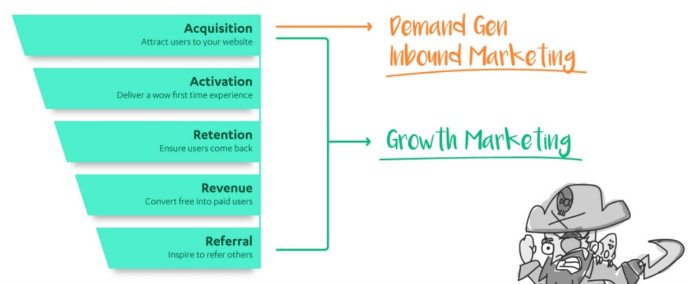 With this wider focus, growth marketers can direct their efforts toward whatever stage of the funnel leads to the most revenue growth. Are users churning? Prioritize customer success. Leads dropping off? Create a nurture journey. Activation is meh? Deliver a wow first-time experience. Whatever growth marketers have to do to move the needle, they do it.
With this wider focus, growth marketers can direct their efforts toward whatever stage of the funnel leads to the most revenue growth. Are users churning? Prioritize customer success. Leads dropping off? Create a nurture journey. Activation is meh? Deliver a wow first-time experience. Whatever growth marketers have to do to move the needle, they do it.
2. Stick with a process to run effective experiments
Lars Lofgren shared his philosophy and process for tripling your conversion rates with A/B testing. Check out his track record from his time at Kissmetrics: 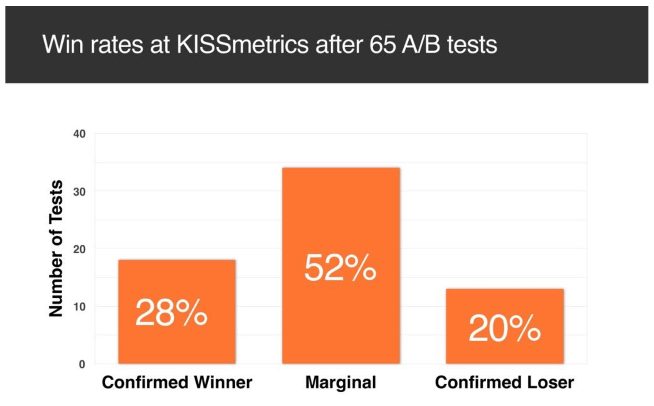 Lars’ approach boils down to eight rules:
Lars’ approach boils down to eight rules:
Above all else, the control stands
Get 2000+ people through the test within 30 days
Wait at least 1 week before checking data
Only launch variants at 99% statistical significance
If the test drops below 10%, ditch it
If no new winner after a month, ditch the variant
Get the next test ready while you wait
If you have another goal, say so before starting
Following this proven-in-real-life process will help you avoid shooting from the hip with your next A/B test.
3. Map the customer journey
We noticed a trend of companies using data to create personalized experiences throughout the customer journey. For example, SendGrid learned that their customers tend to churn when an in-house project ends. As a result, the company recently launched a six-month lead nurturing experiment to reactivate users. Whereas other companies like Intercom focus on getting users to aha moments during onboarding. And since products are always changing, there’s always more onboarding to be done. This trend aligns with our recent research findings that high-performing marketers are mapping the customer journey: 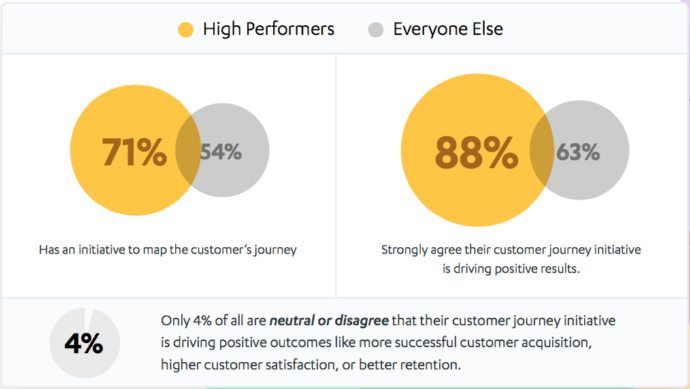 We found that 71% of high performers have mapped their customer’s journey, and 88% say their customer journey initiative is driving better acquisition, satisfaction, and retention. Check out the findings for yourself.
We found that 71% of high performers have mapped their customer’s journey, and 88% say their customer journey initiative is driving better acquisition, satisfaction, and retention. Check out the findings for yourself.
4. Your goal with copy is to get the reader to the next word, and the next…
You can’t win the sale on the first interaction. We all know that. So as you write copy, choose words that nudge readers to the next step. Here are a few tips:
Find their pain points.** Prospects don’t care about you. Sorry. Solve their problems to win their attention.**
Don’t try to sell to everyone. If you do, your message will get watered down and you’ll end up not selling to anyone, anyway.
Use their language. Include the actual words you’ve heard customers say in interviews, in reviews, and through your contact us forms. This ensures message-market match.
5. Set goals to get your team on the same page
Sean Ellis went in-depth about setting goals to avoid wasting effort and hitting stalls in growth. His framework is simple:
Determine your objective.
Brainstorm ideas.
Prioritize experiments.
Run the test.
Analyze the results.
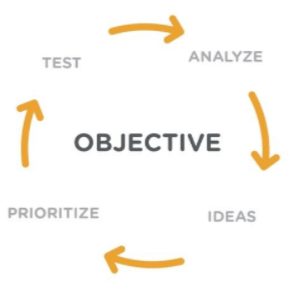 We hear everywhere that we need to test. But what we don’t hear is that a person needs to take ownership for driving the process. There needs to be a leader who keeps the team focused on high-leverage experiments, guards them from burnout by sticking to a rhythm, and celebrates the victories along the way. Last thing: Check out GrowthHackers collaboration platform if you’re looking for a tool to track all of your experiments.
We hear everywhere that we need to test. But what we don’t hear is that a person needs to take ownership for driving the process. There needs to be a leader who keeps the team focused on high-leverage experiments, guards them from burnout by sticking to a rhythm, and celebrates the victories along the way. Last thing: Check out GrowthHackers collaboration platform if you’re looking for a tool to track all of your experiments.
6. Understand your customer, not just who you want to target
George Revutsky (possibly our favorite speaker at the conference) built on the AARRR framework by adding research and optimization. The end result? ROAARRR. Big emphasis on the first “R,” which stands for Research to understand your customer. Revutsky breaks it down like this: You have to research where the opportunity is to find out where to test next, and you have to research who you’re targeting and find out why they dropped off. 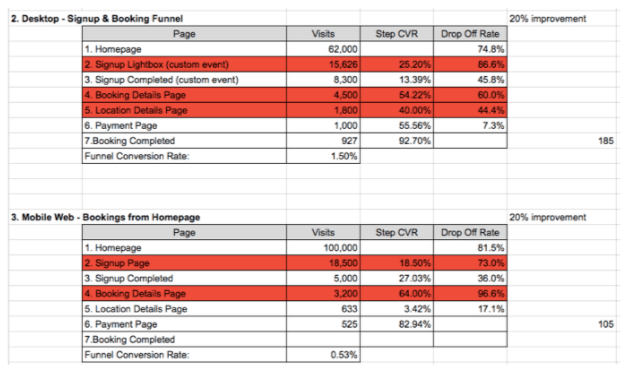 Then, and only then, is when you should come up with a hypothesis to test.
Then, and only then, is when you should come up with a hypothesis to test.
7. Position your product with “boring” words until you’re brand is well-known
Have you ever noticed how established brands use more abstract headlines on their website? In the _Copywriting, Email Marketing & Conversion for Growth-Minded Businesses _workshop, Liston Witherill highlighted this trend by showing eight different project management software websites without the brand name. Almost everyone used some form of the word “manage,” and some did not. Why? The lesser-known brands use “manage” so you know what they do right away. They need to be as descriptive as possible so they don’t lose people’s interest since their brand credibility is not as strong. Bigger brands have the luxury of not needing a descriptive headline. They can see abstract things like “Make your life easier” because new visitors have heard about them before. For example, Asana’s headline is “move work forward”. Abstract? Yes. But works for them? Yep. 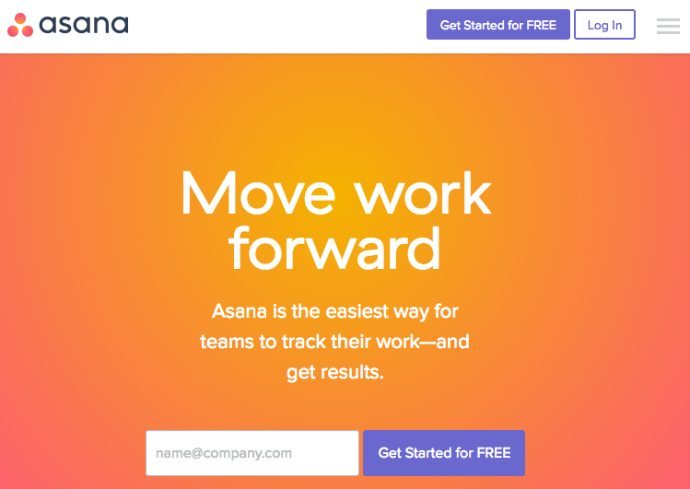 The takeaway here is to use straightforward words in your headline until you’re so big that you won’t have to.
The takeaway here is to use straightforward words in your headline until you’re so big that you won’t have to.
8. Steal your competitor’s traffic with smart backlinking outreach
Backlinks are essential to ranking higher in search. If you’re the underdog going against competitors with more backlinks than you, try a tool like Ahrefs to see who is linking to them. 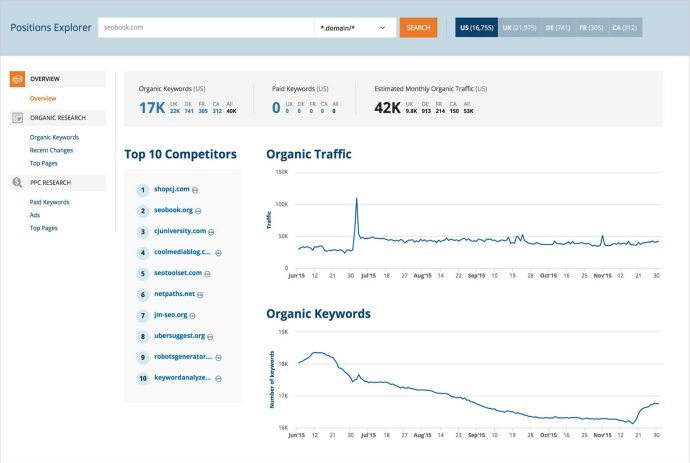 Once you know, you can reach out to the referrers with quality content of your own to ask for backlinks, and steal your competitor’s traffic.
Once you know, you can reach out to the referrers with quality content of your own to ask for backlinks, and steal your competitor’s traffic.
9. Align marketing, sales & success to create a unified customer experience
Steli Efti spoke on the winning growth formula of aligning marketing, sales, and success. Because at the end of the day, all three teams are actually one team contributing to revenue. Marketers generate leads. Sales closes deals. Success increases retention and expansion. All three are essential to growing the bottom line. With misalignment, the system breaks. In Efti’s view, the team needs to align on the two things that matter: 1. Make customers more successful 2. Acquire more successful customers And form one team: Team Successful Customers. (We call this our “Go Team” at Autopilot).
10. You can’t be a one-trick pony growth marketer
Growth is the combination of multiple disciplines. Take a gander at the list of topics from growthhackers.com to get a taste: 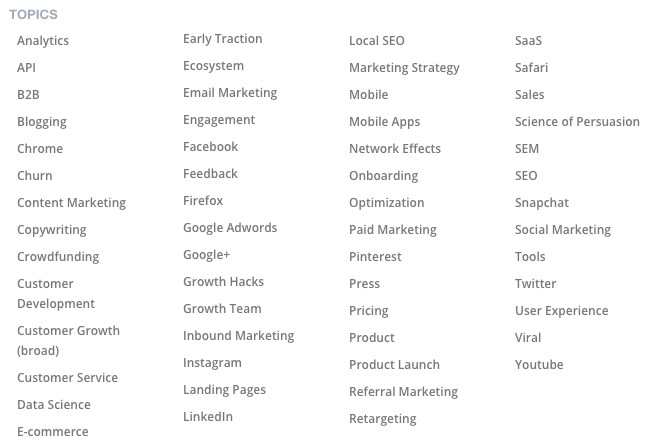 A little overwhelming, isn’t it? You don’t have to be able to do it all, but you do have to be an expert in at least one area with a working understanding of the others. Put simply, you have to be a T-shaped marketer.
A little overwhelming, isn’t it? You don’t have to be able to do it all, but you do have to be an expert in at least one area with a working understanding of the others. Put simply, you have to be a T-shaped marketer. 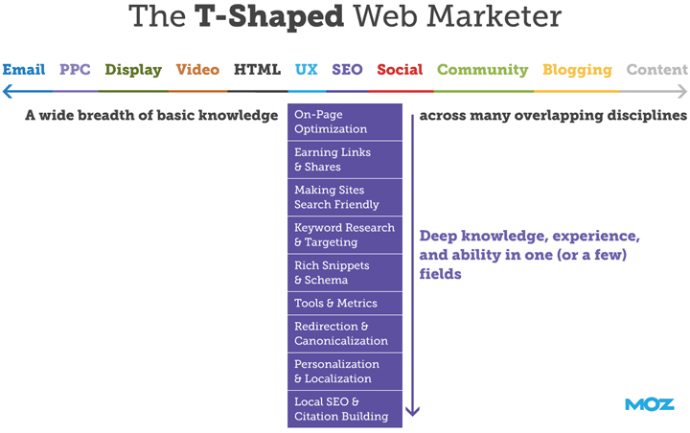 What were your biggest takeaways from Growth Marketing Conference 2016? Are you coming next year? Let us know in the comments.
What were your biggest takeaways from Growth Marketing Conference 2016? Are you coming next year? Let us know in the comments.












